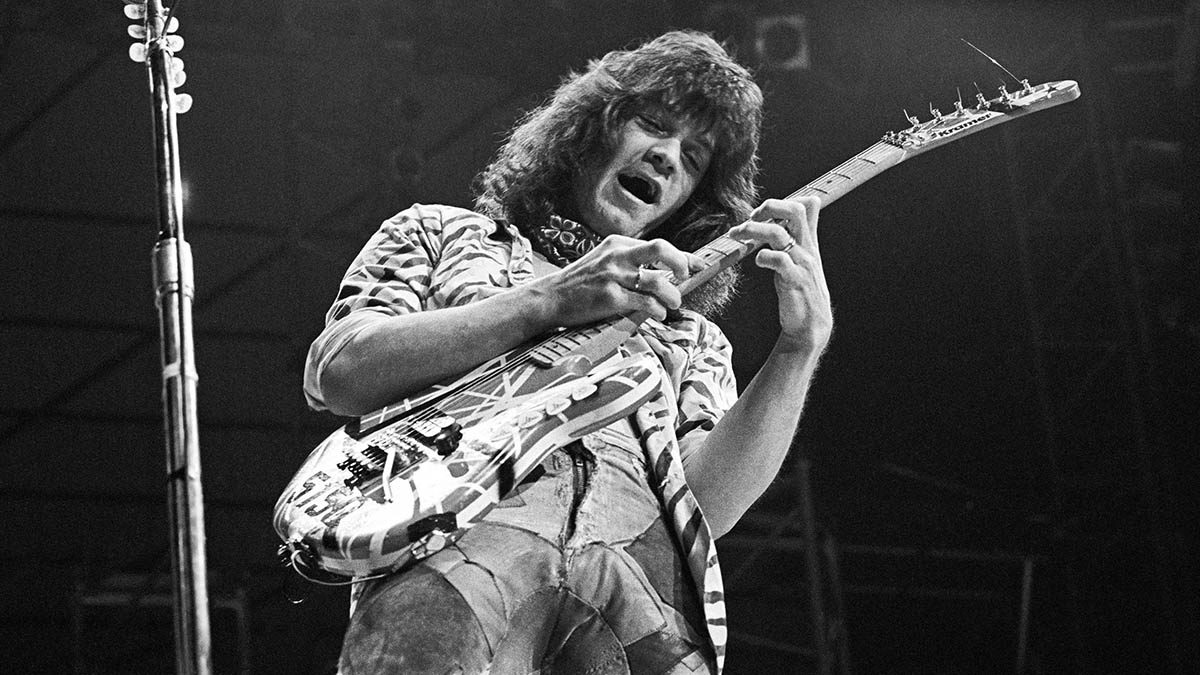New Van Halen documentary takes us back to the early ‘80s to tell the story of how Eddie built 5150 Studios as the band were coming apart
Or how Eddie Van Halen helped pioneer working from home, reinvented guitar, befriended Frank Zappa and ended up producing My Mother Is A Space Cadet for a young Dweezil Zappa

Things were changing for Van Halen in the early ‘80s. The music industry was changing, too, and the band’s maverick electric guitar wrangler, the peerless Eddie Van Halen, had an idea that could give him and the band more control over their sound, building a firewall between them and the label, between them and the outside world.
Inspired by Frank Zappa’s independence, Eddie would build his own studio, and there is a new documentary on YouTube takes us back to 1981 to pick up the story.
Produced by The Tapes Archives, the Van Halen 1984 Documentary is a five-part miniseries made by fans that tells the story of the band arriving at their creative and commercial peak, and episode one has a wealth of material for audio engineering geeks and Van Halen fans alike. It’s a story that centres around Eddie and the producer/engineer Donn Landee's decision to build their own studio, close to but far apart – and in competition with – the many other commercial facilities in Studio City, California.
It was a radical move. Only the radicals, like Zappa, had done so, but it would give Van Halen freedom. They had felt under pressure to write and record Diver Down. The amount of cover songs frustrated Eddie. Speaking to Guitar World in February 1990, eight years on from the album’s release, it still pissed him off that the album was made of half-covers – especially that the synth part he wrote for the band’s cover of Martha and the Vandellas’ Dancing In The Street was intended for one of his original songs.
“At the time I had enough music of my own,” he said. “You know that Mini-Moog riff that opens Dancing In The Street? I’d written that for my own song, but everybody wanted it for Dancing In The Street. I said, ‘What?’ So that’s why I built my own studio. “Put it this way: I’d rather bomb with my own songs than make it with someone else’s. I don’t buy the philosophy of ‘If you redo a proven hit, you’re halfway there.’ That way, you’re not there. I’ve played enough cover tunes.”
There was no going back. Building his own studio, Eddie could keep Warner Bros at arm’s length. He could keep producers out. He could insulate them from outside pressures. And as the documentary discusses, it would also allow him to play around with sound, and for that he needed lots of gear. Sourced from a 1985 article in Recording Engineer Producer magazine, written by the studio designer Howard Weiss, it lists 5150 Studios initial gear inventory in detail.
You can read that article at The Tape Archives. Watch the first two episodes of the documentary above, with the second focusing on the run-up to the band’s legendary performance at The US Festival in 1983, when Eddie won the respect of The Clash’s Joe Strummer.
Get the MusicRadar Newsletter
Want all the hottest music and gear news, reviews, deals, features and more, direct to your inbox? Sign up here.
Was building 5150 Studios the right move? It did cause tension. Eddie Van Halen admitted that it exacerbated tensions with frontman David Lee Roth, who tracked 1984 there before leaving the band and being replaced by Sammy Hagar for 1986’s 5150. But as Eddie explained to Guitar World, he ultimately did it for the band’s benefit.
“The way we did [5150] is basically how I would have liked to have done all the previous records,” he said. “And I think that’s another thing that maybe drove Dave away. Because for 1984, I built the studio and I started wanting to do things a little more my way, and I guess I turned some people off; I created a little friction. Not meaning to. I built the fucking story for the benefit of all of us, for the family, for the band.”
Jonathan Horsley has been writing about guitars and guitar culture since 2005, playing them since 1990, and regularly contributes to MusicRadar, Total Guitar and Guitar World. He uses Jazz III nylon picks, 10s during the week, 9s at the weekend, and shamefully still struggles with rhythm figure one of Van Halen’s Panama.










